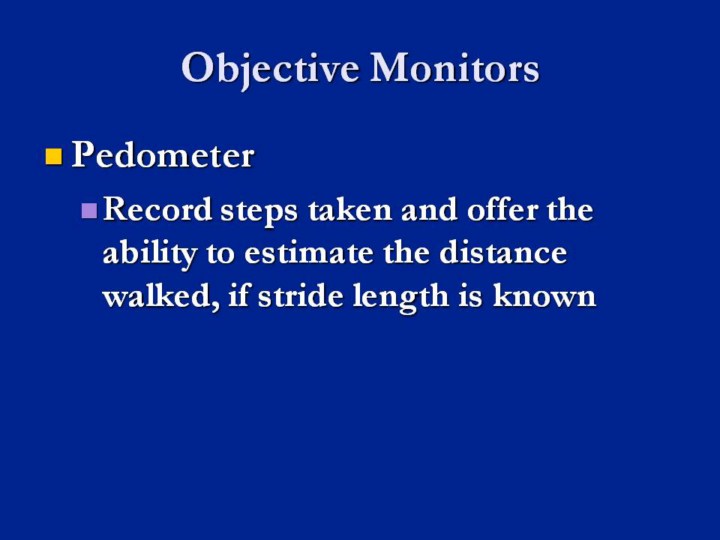| front |1 |2 |3 |4 |5 |6 |7 |8 |9 |10 |11 |12 |13 |14 |15 |16 |17 |18 |19 |20 |21 |22 |23 |24 |25 |26 |27 |28 |29 |30 |31 |32 |33 |34 |35 |review |
 |
The pedometer is another type of movement monitor that counts steps taken throughout the day (walking, jogging, running). PROS. Pedometers are objective measure of walking, a common type of physical activity. Pedometers are inexpensive, non-invasive, and easy to administer, making them practical to use in a variety of settings. Pedometer step count feedback can be used to promote behavior change. CONS. Pedometers were specifically designed to assess ambulatory movement and are not accurate in assessing activities that move away from ambulation (ex. bicycling). Also, most pedometers are not waterproof and cannot be used to assess water-based activities. Proper placement is essential for accurate results and pedometers may be subject to patient tampering.
Recommended Reading: Crouter SE, Schneider PL, Karabulut M, Bassett DR Jr (2003). Validity of 10 electronic pedometers for measuring steps, distance, and energy cost Medicine & Science in Sports & Exercise; 35:1455-1460.
Schneider PL, Crouter SE, Bassett DR (2004). Pedometer measures of free-living physical activity: comparison of 13 models. Medicine & Science in Sports & Exercise; 36 :331-335. |